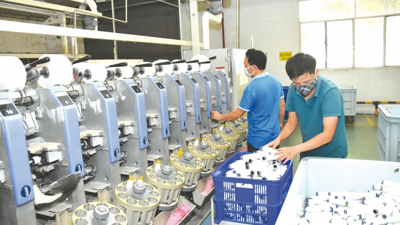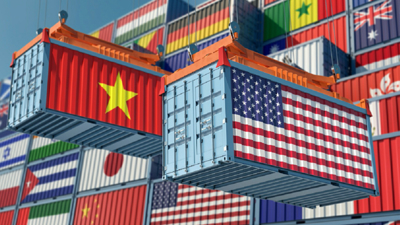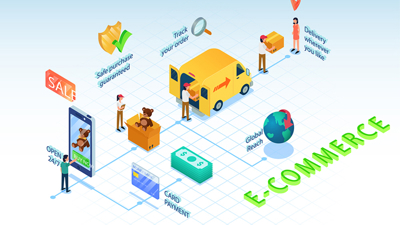D&I Matters
Not just two simple letters, D&I stands for diversity and inclusion – a trend that can help us open up a world of opportunities for all by building a diverse and inclusive work environment.
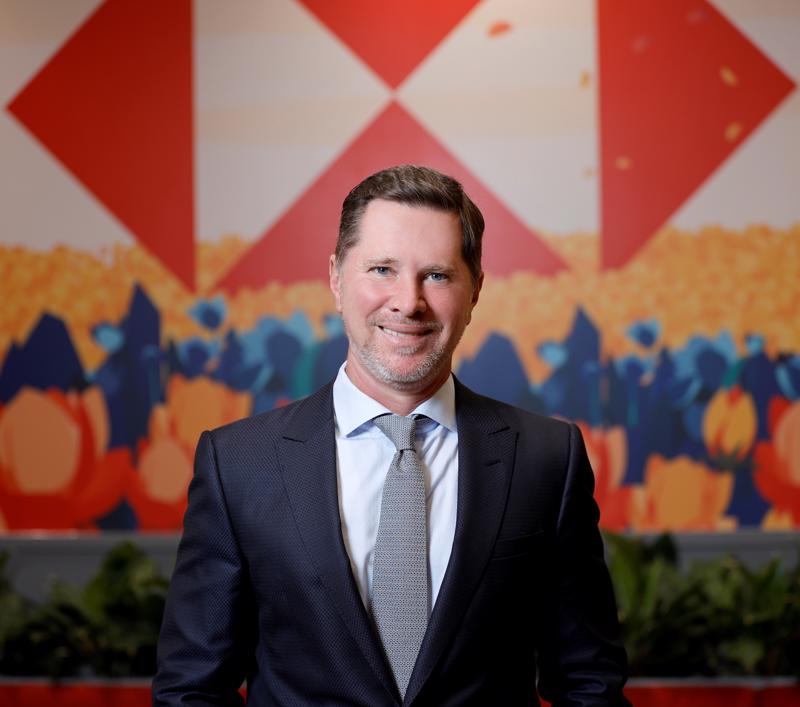
I have been working in the corporate space for more than 30 years. Having experienced the working environment across different cultures, nationalities, and times, I have had the opportunity to observe firsthand the evolution in the workplace as well as across corporate culture. Trends often come and go, but some have a longer and more positive impact on organisations and society. Diversity & Inclusion (D&I) is one of those.
D&I has become a buzzword that draws significant attention in corporates worldwide. Many organisations have actively promoted D&I in their culture and integrated it into company policies and recruitment processes. In Vietnam, similar to other global trends like ESG adoption, FDI enterprises are often among the first to embark on the D&I journey, following their parent companies’ lead.
In the past few years, we have seen many initiatives focusing on gender. Particularly, the spotlight has been shone on activities such as Pride Month (in June), Pink October, and Movember. These are positive starting points for organisations to promote, reinvent, or sharpen their D&I efforts. However, we must look at the big picture. D&I is much more than just events; it is a critical component of a company’s culture.

A long history
D&I in the business context refers to the interlinked values held by many organisations to support people of different cultures, races, ethnicities, religions, abilities, genders, and sexual orientations. Its origin can be traced back to the mid-1960s, when workplace diversity training emerged following social movements and regulatory developments related to equal employment. Companies were encouraged to train employees to adapt to a more integrated and tolerant workplace. While such programmes had little lasting impact, they laid the foundation for future progress.
There was an important shift in D&I during the 1980s–1990s as its scope broadened to address the diverse needs of various groups, including LGBT+ communities. This era also saw the D&I concept becoming mainstream, with titles like Chief Diversity Officer emerging.
The 21st century marked a boom in D&I awareness, mainly driven by social media platforms, which served as strong catalysts for integrating D&I into business strategy. D&I evolved beyond being a single programme to becoming part of the DNA of corporates. According to PwC’s Diversity & Inclusion Benchmarking Survey, 75 per cent of organisations identified D&I as a stated value or priority area. In Vietnam, D&I is now recognised as an essential aspect of business culture and sustainability.
D&I in the banking sector
Gen Z will comprise more than a quarter of the global workforce by 2025. This should be a key focus for banks amidst growing competition from startups and fintech companies, as they aim to attract younger generations of workers who bring fresh perspectives that align with an increasingly diverse customer base. These workers also offer valuable technology and data skills critical for thriving in an age of digital disruption.
As the most diverse and educated generation in the workforce, Gen Z is increasingly demanding diversity and inclusion in the workplace. According to a ManpowerGroup report, 56 per cent of Gen Z say they would not accept a job in an organisation lacking diverse leadership.
The challenge of underrepresentation of women remains acute in banking leadership roles. For instance, women occupy only 30 per cent of top management positions at major US banks, and this figure is even lower at top European banks (25 per cent). In Vietnam, while women are strongly represented in the banking sector, they are underrepresented in senior (33 per cent) and top-level (26 per cent) management roles.
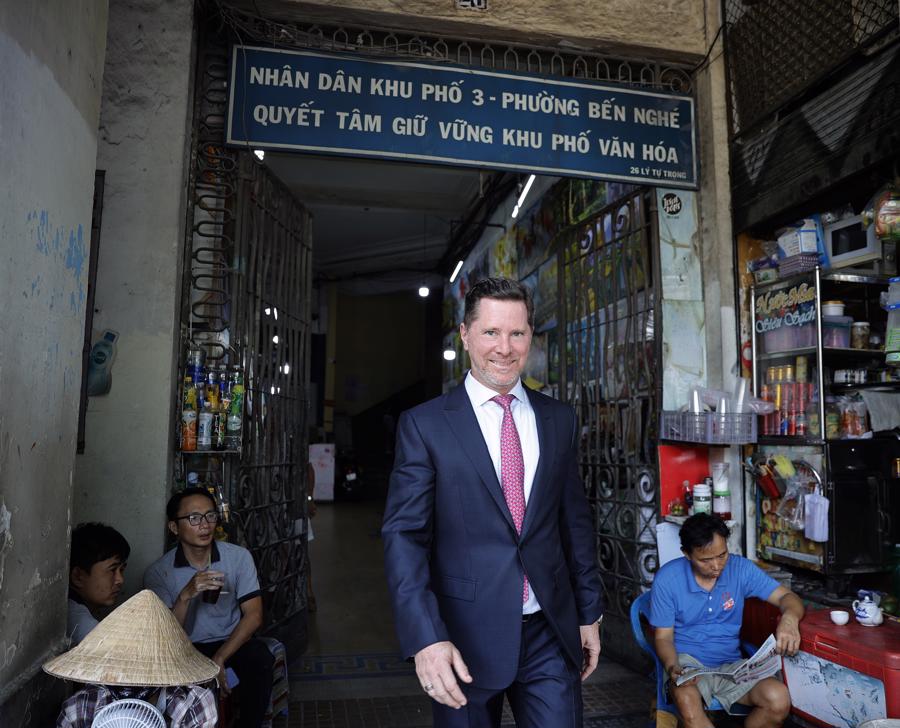
The significance of D&I
Diversity and Inclusion are interconnected, but each term has its own meaning and implications. Diversity refers to the demographics of the people in your organisation, including who they are, their genders, the generations they belong to, the cultures they come from, and more. Inclusion refers to how they experience the workplace, how much they are embraced within the organisation, and how they are enabled to make meaningful contributions.
Companies that are diverse and inclusive are shown to have better decision-making quality, excel in driving innovation, create advantages in talent acquisition, and align more effectively with diverse customer bases. All these key areas ultimately influence an organisation’s performance.
A report by McKinsey shows clear correlations between diversity and business performance. Their analysis of 2019 data indicates that companies in the top quartile for gender diversity were 25 per cent more likely than those in the fourth quartile to have above-average profitability (up from 21 per cent in 2017 and 15 per cent in 2014). In particular, the greater the representation of gender diversity, the higher the likelihood of outperformance. For instance, companies where more than 30 per cent of executives are women were significantly more likely to outperform companies where this percentage ranged from only 10 per cent to 30 per cent. The most gender-diverse companies exhibited a substantial differential in their likelihood of outperformance (48 per cent) compared to less gender-diverse companies.
Fostering a D&I environment
Despite the profound positive impact of D&I, many challenges remain in fostering a more diverse and inclusive workplace, namely the absence of a holistic approach, a low level of leadership involvement, and/or a lack of data and effective measurement methods. However, there are many ways to remove such barriers.
First, D&I should not be considered a standalone matter. It should fit into the overall business strategy. In particular, D&I should become a prominent aspect of the ESG agenda of an organisation. Hence, it needs a comprehensive approach to make a difference, not just be limited to fun activities. For instance, at HSBC, we aim to become a truly inclusive business by focusing on four key pillars: fair and inclusive recruiting, progression of underrepresented talent, building an inclusive culture, and supporting an inclusive society.
Second, we all need to set specific targets and goals for increasing diversity and promoting inclusion. These are enabled by building good diversity data, which helps us target our actions, measure progress, and hold ourselves accountable. Let us take HSBC as an example. We have set a goal to reach 35 per cent of senior leadership roles being held by women by the end of 2025, and we remain on track, with 34.1 per cent achieved at the end of 2023. We also have an inclusion index to assess how inclusive our culture is by measuring colleagues’ feelings of belonging, psychological safety, perception of fairness, and trust in our annual all-employee engagement survey. At the end of 2023, 78 per cent of team members felt we were creating a favourable environment—three points higher than our goal and two points above the financial services industry benchmark. That said, we cannot rest on our laurels. We all have a duty to positively influence our culture each and every day. There is no finish line.
Third, businesses should double down on employee resource groups or committees. As organisations expand, employees are more likely to feel disconnected. Building employee resource groups or networks is a good way for groups of people to stay connected at work, especially in large corporates. At HSBC, we have eight global networks made up of local employee resource groups: HSBC Ability (disability), HSBC Balance (gender), HSBC Embrace (ethnicity), HSBC Faith (faith), HSBC Generations (age), HSBC Nurture (parents and carers), HSBC Pride (LGBTQ+), and HSBC Communities (common interest communities such as Mindfulness, Wellbeing, and Flexible Working).
Last but not least, it all starts at the top because business leaders are the ones who shape the policies, model them, and embed them within their organisations. It is not just about a verbal commitment but setting a real and meaningful example by encouraging everyone across the organisation to take actions that positively drive D&I. As the CEO of HSBC Vietnam, I signed the Vietnam Panel Pledge in 2022, committing to actively challenge the absence of female speakers at events, roundtable discussions, and public conferences or forums. I did this by discussing panel composition with event organisers, recommending female speakers, and creating a positive mindset for the inclusion of women in all discussions. First launched in 2019, the Vietnam Panel Pledge has been signed by eight consuls general, 34 business leaders, and 10 chairpersons and executive directors of chambers in the country. Actually, this is not something new globally. The Panel Pledge first started in 2012, in an effort to substantially improve women’s representation in public and professional forums. It has been widely adopted since then because it is truly effective and simple to implement. Therefore, I do hope to see more men joining us in taking the pledge to amplify its impact in Vietnam.
Overall, we have made progress, but we know we still have more to do in the D&I space. When we get this right, we will all benefit from the richness of different backgrounds, experiences, and perspectives and create a positive environment where everyone has a genuine chance to be at their very best at work.


